- Home
- Farley Mowat
Sea of Slaughter Page 2
Sea of Slaughter Read online
Page 2
Through the long course of time this exceptional creature bore many names. The ancient Norse called it geiifugel—spearbird, while the even more ancient Basques knew it as arponaz—spearbill. Both names paid tribute to the great bird’s massive, fluted mandibles. Spanish and Portuguese voyagers called it pinguin—the fat one—a reference to the thick layer of blubber that encased it. By the beginning of the sixteenth century most deep-water men of whatever nation had adopted some version of this later name, as pennegouin in French, and pingwen in English. Indeed, it was the first, and the true, penguin. But before the nineteenth century ended, all of its original names had been stripped from it and it passed out of time carrying a tag attached to dusty museum specimens by modern science... great auk. I shall refer to it by the names bestowed on it by those who knew it in life.
During the aeons when scattered bands of prehistoric human beings flourished along the European coasts, the spearbill flourished, too. Its likeness is found in Spanish cave paintings and carved in stone in Norway, and its bones have been excavated from neolithic kitchen middens as far to the south as the Mediterranean coast of France. Clearly the spearbill was contributing to human survival 10,000 and more years ago; yet the predation of our ancestors had no evident effect upon its range or abundance. It was not until the human hunter began his transition into industrial man that the toll began to grow exorbitant.
By AD 900, the spearbill was no longer being killed primarily for food; it was being slaughtered for its oil and for its soft, elastic feathers, both of which had become valuable trading commodities throughout much of Europe. So avidly was it hunted on the European coasts thereafter that, by the mid-1500s, only a scattering of its eastern Atlantic breeding colonies had escaped destruction. By a century later only one remained, on the bleak and forbidding island of St. Kilda in the Outer Hebrides. In 1697, St. Kilda was visited by a certain Mr. Martin who left us this succinct account.
“The gairfowl is the stateliest as well as the largest sort [of seabird], of a black colour, red about the eyes, a large spot under each eye; a long broad bill; it stands stately, its whole body erected, its wings short, flies not at all; lays its egg upon the bare rock which if taken away she lays no more for that year... it appears the first of May and goes away the middle of June.”
Sometime before 1800 it went away from St. Kilda for the last time... never to return.
Look now at a time before Europe began to cast its engulfing shadow over the New World.
A little cluster of men gather in darkness beside two bark canoes drawn up on a stony beach in what will one day be known as Newfoundland. They peer earnestly into the pre-dawn sky. Slowly the light strengthens, revealing a few tendrils of high cloud in the western dome. There is no threat of wind. The men smile their satisfaction at one another and at the tall, tawny one who leads them on this June day.
As they wade into the landwash, carefully holding their fragile craft clear of the kelp-slimed rocks, the sun explodes over the hills behind them. On the sea horizon, a string of looming shadows begins to take on the contours of a low-lying archipelago. Aimless catspaws riffle the water as the canoes drive out from land toward the distant islands, leaving the scattered tents of the People to dwindle into insignificance against a sombre wall of forest.
In the full glare of morning, the islands become haloed with a glittering haze of flashing wings as their inhabitants depart the land to begin the day’s fishing. Phalanx after phalanx of arrow-swift murres and puffins fill the air with their rush and rustle. Above them, massed echelons of snowy gannets row steadily on black-tipped wings. Terns, kittiwakes, and larger gulls fly arabesques betwixt and between until the sky seems everywhere alive with flight.
The sea through which the canoes ease swiftly is living, too. Endless flotillas of the big black-and-white divers, that fly in water instead of air, stream outward from the low-lying islands. The first flock comes porpoising past the canoes. The men cease paddling and their leader touches a bone amulet hanging around his neck, upon which is carved an image of the spear-billed bird.
The morning is half-spent before the paddlers close with the island of their choice, and now the multitudes that have remained ashore to incubate their eggs or brood their young begin to take alarm. Soon they are rising in such numbers that the sky is obscured as by a blizzard. So vast is this airborne armada that the sun’s light is dimmed and the surface of the sea hisses from the rain of droppings falling into it.
As the canoes approach the island, winged masses descend on them like the funnel of a tornado. The rush of air through stiffened pinions and the harsh clangour of bird cries make it hard for the men to hear each other’s shouts as they leap overside and carry the canoes to safety on the sloping rocks of the foreshore.
They move with hunched shoulders, as if cringing under the weight of furious life above them... and ahead. Not twenty feet from the landing place, rank after serried rank of spearbills stand, so closely packed that they seem almost shoulder to shoulder. Here stands an army of occupation hundreds of thousands strong. It covers almost the entire surface of the mile-long island. Each individual bird is incubating a single enormous egg in a shallow depression in the stinking mass of guano that everywhere overlies the ancient rock. The birds nearest the intruders turn as one to face the threat, bodies erect and fearsome beaks thrust out.
The men move warily, each holding his long, pointed paddle before him like a lance. The leader pauses, fingers his amulet again, and, in a voice hardly audible above the shrieking hubbub, makes his apology for what he and his companions are about to do.
Abruptly the paddles become flails. At the first thud of wood on bone and flesh, the foremost ranks of spearbills begin to break and fall back, each bird stumbling clumsily into those behind. Confused by the crush, those in the rear strike angrily at neighbours who are being pushed across the invisible boundaries of each one’s tiny territory. Defence of territory becomes more pressing an issue than defence against the human intruders, and chaos ripples through the massed battalions.
While some of the men continue flailing at the nearest birds until they have killed three or four dozen of them, the rest hurriedly fill sealskin shoulder bags with eggs. Not ten minutes after landing they begin their retreat, dragging the slain birds by their necks and humping the heavy bags of eggs to the beached canoes. Loading and launching are done with the urgency of thieves. Each man seizes his paddle and, half-deafened by the noise, half-choked by the almost palpable stench, they flee as if pursued by devils. None looks back at the pandemonium still sweeping the Island of the Birds.
This vignette is set at the Port au Choix Peninsula, which juts out from the west coast of Newfoundland into the Gulf of St. Lawrence. Here archaeologists have been sifting through the rich remains of a series of aboriginal cultures that drew heavily upon the sea for sustenance.
Reliance on the spearbill in particular is revealed by the great quantities of bones uncovered in middens, living sites, and even in graves. One grave alone yielded more than 200 spearbill mandibles while another contained the image of a spearbill incised on bone.
The Port au Choix people were by no means unique in their relationship with the spearbill. Kitchen middens all the way from Disco in northwest Greenland south as far as Florida yield spearbill bones. The big birds provided the littoral dwellers of the western Atlantic seaboard with eggs and meat in and out of season. Greenland Inuit (like seventeenth-century Scots on the Hebrides) rendered spearbill fat and stored it against winter needs in sacks made from the birds’ own inflated gullets. Indians from Labrador to Cape Cod smoked or dried the meat, which would then keep for months. The Beothuks, the last native inhabitants of Newfoundland, even ground the dried contents of spearbill eggs into a kind of flour from which they made winter puddings.
Yet with all of this, the thousands of years during which the bird provided a vital source of sustenance to generations of human be
ings seem to have had no appreciable effect on the spearbill population. Those early peoples were never in danger of eating themselves out of house and home by levying too heavy a toll. They took no more than they needed with the result that, when Europeans arrived on the scene, they found spearbill rookeries scattered along the coasts all the way from Labrador to Cape Cod. And the great divers were so abundant on some of the offshore fishing banks that early chroniclers could only describe them as uncountable.
One April day in 1534, two Breton smacks of the sort usually employed in the cod fisheries at Terre Neuve put to sea from the port of Saint Malo. They were not, however, going fishing. They were under charter to a hawk-visaged, forty-two-year-old entrepreneur named Jacques Cartier for a commercial reconnaissance of the inland sea the French called La Grande Baie, now the Gulf of St. Lawrence.
The two little sixty-tonners crossed the Western Ocean successfully to make landfall at Cape Bonavista in northeastern Newfoundland. Here they encountered a tongue of Arctic pack ice driving south with the Labrador Current and were forced to seek shelter in the fishermen’s harbour at Santa Catalina. While they waited for the ice to release them, the seamen assembled and rigged two barques, thirty-foot fishing cutters brought across the ocean broken down in sections. Eventually, as Cartier’s chronicler recorded, the wind veered offshore, blowing the ice seaward and opening a passage along the Newfoundland coast to the northward.
“On the 21st of the month of May we set forth from harbour... and sailed as far as the Isle of Birds, which island was completely surrounded and encompassed by a barrier of ice, broken and split into cakes. In spite of this our two barques were sent off to the island to procure some of the birds, whose numbers were so great as to be incredible, unless one has seen them for himself, for although the island is scarcely a league in circumference it is so exceeding full of birds that one would think they had been stowed there [as one would stow the hold of a ship].
“In the air and round about on the water are a hundred times as many as on the island itself. Some of these birds are as large as geese, being black and white with a beak like a raven. These stay always in the water, not being able to fly in the air because they have only small wings, about half the size of a man’s hand, with which, however, they move as quickly through the water as the other birds fly through the air. And these birds are so fat it is a marvel to behold. We call them Apponatz, and in less than half an hour our two barques were laden with them as if laden with stones. Of these birds each of our ships salted four or five casks, not counting those we were able to eat fresh.”
In the spring of the following year Cartier took a second expedition into the Gulf and again stopped at the Isle of Birds where a new, but equally astonished chronicler had this to add:
“This island is so exceedingly full of birds that all the ships of France might load a cargo of them without anyone noticing that any had been removed. We took away two barque loads to add to our stores.”
So reads the earliest surviving record of an encounter between Europeans and spearbills in North America; but it was assuredly not the first. The course Cartier’s Bretons steered into the Gulf had been established before 1505, and his Isle of Birds was already a well-known sea-mark on the route. Now called Funk Island, it is a thirty-five-foot-high slab of granite, half-a-mile long by a quarter wide, lying some thirty miles off the Newfoundland coast. Its name is an archaic English word meaning an atrocious stench. Funk Island not only lay on the usual route into the Grand Bay via Belle Isle Strait, it also lay well clear of the dangerous reefs that fringe the adjacent mainland coast and inshore islands. For these reasons it was the preferred rookery at which inbound ships could call to fill their casks with salted spearbill carcasses; but it was by no means the only such rookery in the region. Forty miles to the east, in the mouth of Bonavista Bay, are two islands each of which also once bore the name Funk, but are now called Stinking Islands.1 At about the same distance southwest lie twin Penguin Islands. There are also several bird islands in the nearby Wadham group, on one of which local fishermen found a veritable charnel house of partly burned bones they identified as the remains of “pinwins” slaughtered and boiled to make oil. Other northeastern Newfoundland sites include the North and South Penguin Islands off Musgrave Harbour and Penguin Island near Baccalieu.
* * *
1 The Funk Island of today is often referred to in the plural. This is a survival of a much earlier usage when “The Funks” was a generic name applied to many bird islands, especially those used by spearbills along the northeastern coasts of Newfoundland.
Spearbill rookeries probably flourished along most of the 5,000-mile coast of Newfoundland. In 1536, an English expedition visited the south coast. What follows is an abridged account taken from Richard Hakluyt’s Principal Navigations... of the English Nation.
“One, Master Hore of London, encouraged divers gentlemen to accompany him on a voyage of discovery upon the Northeast parts of America: wherein his persuasions took such effect that many gentlemen very willingly entered into the action with him.
“From the time of their setting out they were at sea above two months until they came to [the region] about Cape Breton. Shaping their course from thence Northeastward they came to the Island of Penguin, whereon they went and found it full of great fowls, white and gray and as big as geese, and they saw infinite number of their eggs. They drove a great number of the fowls into their boats and took many of their eggs. They dressed [the birds] and eat them and found them to be very good and nourishing meat.”
Hore’s island is to be identified with one lying fifteen miles off Cape La Hune in the middle of Newfoundland’s south coast. The first Europeans to discover it were Portuguese who gave it the name it still bears. As was the case with Funk on the northwest coast, this Penguin Island provided a convenient place for vessels inbound from Europe to the Gulf via the southern route to fill their salt-meat casks with spearbill carcasses.
A third famous rookery existed well within the Gulf itself, and also was visited by Cartier in 1534.
“We came to... two islands... as steep as a wall so that it was impossible to climb to the tops. These islands were as completely covered with birds, which nest there, as a field is covered with grass... we landed on the lower part of the smaller island and killed more than a thousand murres and apponatz, of which we took away as many as we wished in our barque. One might have loaded, in an hour, thirty such barques.”
These two rocky pinnacles with flat and almost inaccessible tops jut out of the Gulf some ten miles northeast of the main Magdalen Island archipelago. In Cartier’s time, they were called Isles de Margaulx because of the immense flocks of gannets nesting on the high plateaux. The smaller island was surrounded by broad ledges just above storm tide level, and it was here that spearbills nested.
As well as providing an important sea-mark, Isles de Margaulx (now the Bird Rocks) served as a convenient “sea-poultry market” where passing vessels could take on stores of meat and eggs. However, it was only one of many such rookeries in the vicinity. The then-uninhabited Magdalen group seems to have had several spearbill colonies. The density of their populations may be judged by the fact that even the one on Bird Rocks, which was physically much restricted and very exposed, managed to survive annual raids by ships’ crews for more than a century. When Samuel de Champlain visited the Rocks in 1620, he found the birds “in such abundance that they may be killed with sticks”; and as late as the end of the 1600s, Charlevoix noted that the islets still harboured “a number of fowl that cannot fly.”
The problem of locating and identifying spearbill colonies in other parts of the northeastern seaboard is difficult, but is assisted by the salient fact that the big birds never came ashore and seldom approached it except for the four to six weeks in the spring and early summer when they were egg-laying, brooding, and rearing their young. Consequently, when we find an otherwise suitable island that has a
t one time borne the name Penguin, or some variant thereof, there is a strong presumption that it once held a spearbill breeding colony.
Additional criteria include the following.
The site must have been free of large resident predators such as wolves, bears, and men, although occasional raids by any of these (and we know that both Indians and polar bears raided Funk Island) would presumably have had little effect on colonies numbering in the hundreds of thousands. Smaller mammals such as foxes and mink would have posed a much lesser threat to birds the size of geese armed with such formidable bills.
The rookeries must, of course, have been usable by flightless birds; but this does not necessarily require a gently sloped transition between land and water. Antarctic penguins making a landing can shoot out of the sea with enough momentum to carry themselves ten feet up the sheer face of an ice-foot and land comfortably on the high lip. The site itself need only have been reasonably level and free of heavy vegetation and tree growth. Because they were flightless birds, which had to swim to wherever they were going, preferred rookeries needed to be located within a comparatively short distance of good fishing grounds so that adults could forage for their young without excessive expenditure of time and energy.
A final point is that great auks were only vulnerable to native peoples when they were on their rookeries; thus, the presence of their bones in any quantity in human sites can be taken as clear indication of a colony reasonably near at hand.

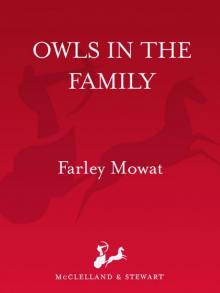 Owls in the Family
Owls in the Family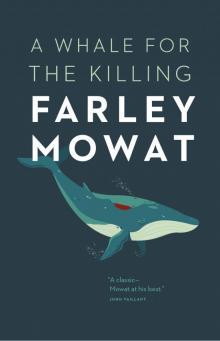 A Whale for the Killing
A Whale for the Killing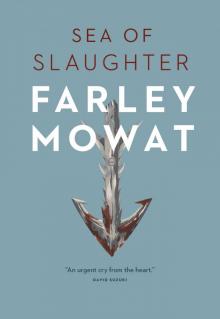 Sea of Slaughter
Sea of Slaughter The Curse of the Viking Grave
The Curse of the Viking Grave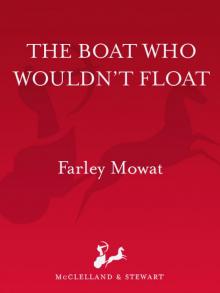 The Boat Who Wouldn't Float
The Boat Who Wouldn't Float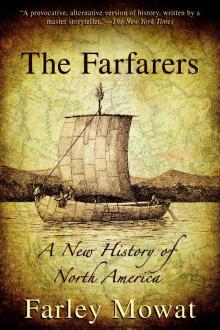 The Farfarers: Before the Norse
The Farfarers: Before the Norse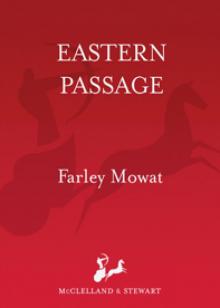 Memoir
Memoir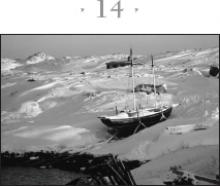 Bay of Spirits: A Love Story
Bay of Spirits: A Love Story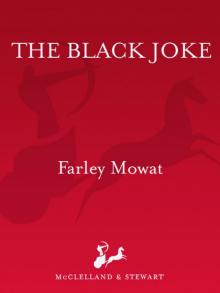 The Black Joke
The Black Joke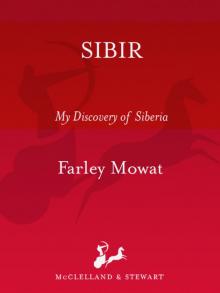 Sibir: My Discovery of Siberia
Sibir: My Discovery of Siberia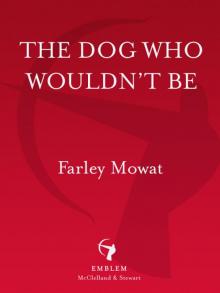 The Dog Who Wouldn't Be
The Dog Who Wouldn't Be Never Cry Wolf
Never Cry Wolf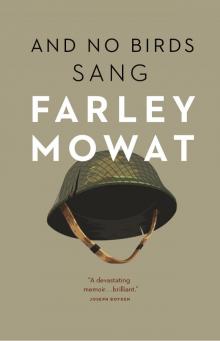 And No Birds Sang
And No Birds Sang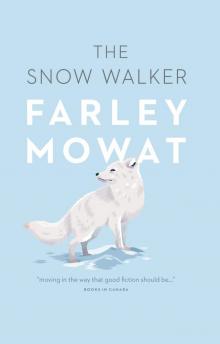 The Snow Walker
The Snow Walker Born Naked: The Early Adventures of the Author of Never Cry Wolf
Born Naked: The Early Adventures of the Author of Never Cry Wolf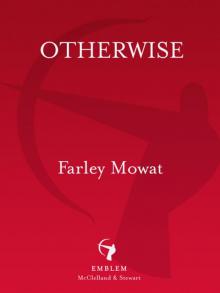 Otherwise
Otherwise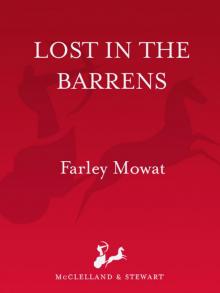 Lost in the Barrens
Lost in the Barrens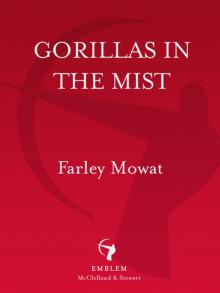 Gorillas in the Mist
Gorillas in the Mist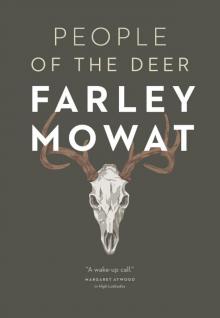 People of the Deer
People of the Deer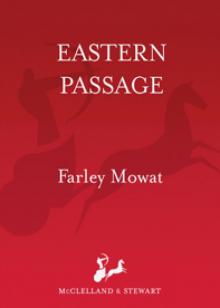 Eastern Passage
Eastern Passage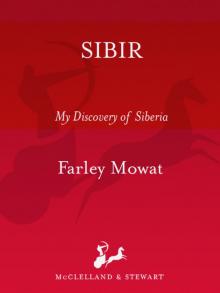 Sibir
Sibir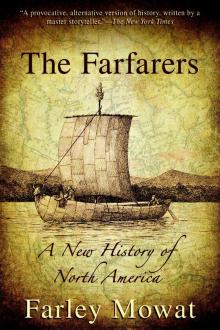 The Farfarers
The Farfarers A Whale For The Killing (v5.0)
A Whale For The Killing (v5.0)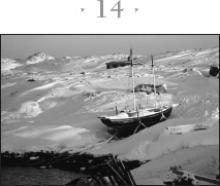 Bay of Spirits
Bay of Spirits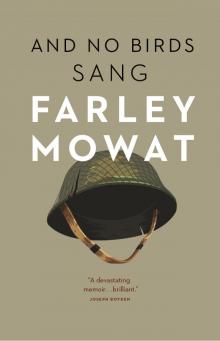 And No Birds Sang (v5.0)
And No Birds Sang (v5.0)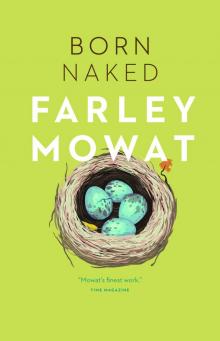 Born Naked
Born Naked